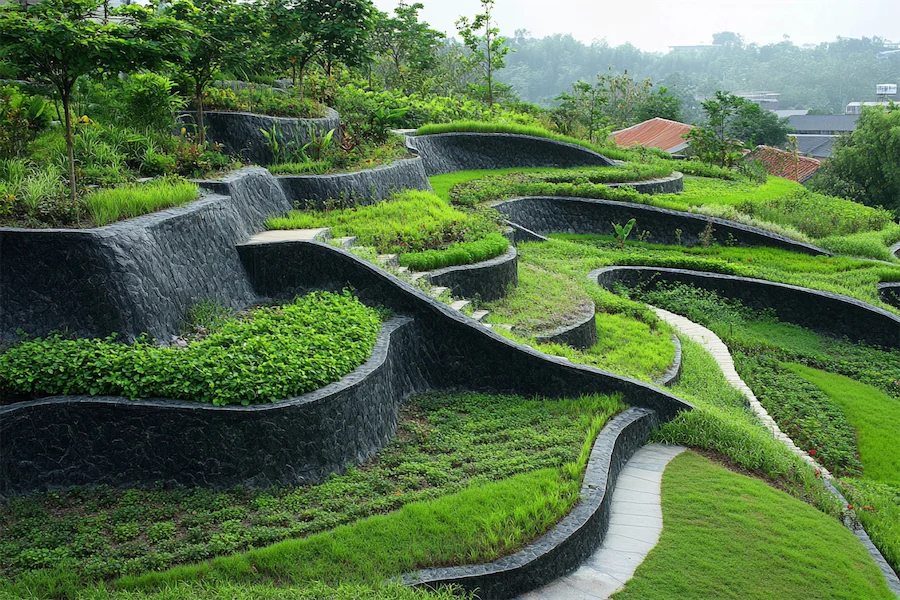A Terraced Garden is a landscaping technique that transforms steep or uneven terrain into a series of level, step-like sections, or terraces. This method not only enhances the aesthetic appeal of a landscape but also improves usability and prevents soil erosion.
History and Origins of Terraced Gardens
Terraced gardening has ancient roots, with early examples found in civilizations such as the Inca in Peru and the Ifugao in the Philippines. These cultures developed terraced fields to maximize arable land on mountainous terrains, enabling efficient agriculture and water management. The practice allowed for cultivation in regions that would otherwise be unsuitable for farming.
Key Features of Terraced Gardens
- Retaining Walls: Essential for supporting the soil on each level, retaining walls can be constructed from materials like stone, brick, or wood. The choice of material influences the garden’s aesthetic and structural integrity.
- Level Platforms: Each terrace provides a flat area suitable for planting, seating, or other functional uses, making sloped land more accessible and versatile.
- Drainage Systems: Proper drainage is crucial to prevent water accumulation and soil erosion. Incorporating drainage solutions ensures the longevity and health of the garden.
Applications of Terraced Gardens
- Agriculture: Terracing enables farming on hilly terrains by creating flat surfaces for crop cultivation, thereby increasing arable land area. This practice is still prevalent in various parts of the world.
- Residential Landscaping: Homeowners utilize terraced gardens to transform sloped yards into functional outdoor spaces for gardening, recreation, or relaxation. Terracing can add depth and interest to a landscape design.
- Erosion Control: Terraced gardens help stabilize steep slopes, reducing runoff and preventing soil erosion, which is beneficial for environmental conservation.
Considerations When Designing a Terraced Garden
- Slope Assessment: Evaluate the steepness and stability of the slope to determine the number and height of terraces required. Professional consultation may be necessary for steep or complex terrains.
- Material Selection: Choose durable materials for retaining walls that complement the surrounding environment and withstand local weather conditions. Natural stone offers a rustic look, while brick or concrete can provide a more formal appearance.
- Plant Selection: Select plants suited to the microclimates of each terrace level, considering factors like sunlight exposure, soil type, and moisture levels. Deep-rooted plants can help stabilize the soil, while ornamental plants can enhance visual appeal.
- Accessibility: Incorporate pathways or steps to ensure safe and convenient movement between terrace levels, facilitating maintenance and enjoyment of the garden. Wide steps can also serve as seating areas, adding functionality.
Conclusion
Terraced gardens are a testament to human ingenuity in adapting to challenging landscapes. By converting slopes into usable, attractive spaces, they offer practical solutions for agriculture, residential landscaping, and environmental management. Thoughtful design and implementation of terraced gardens can enhance property value, aesthetic appeal, and ecological stability.
